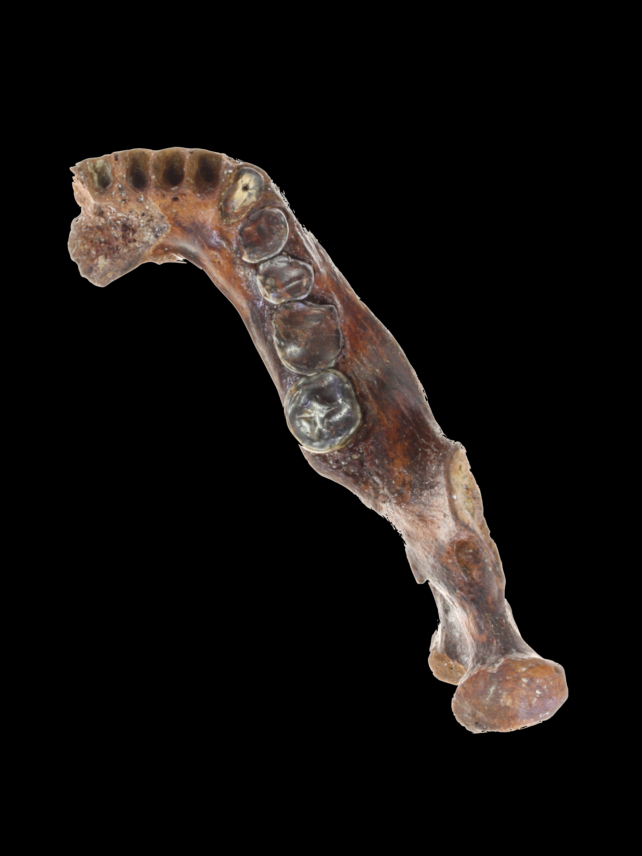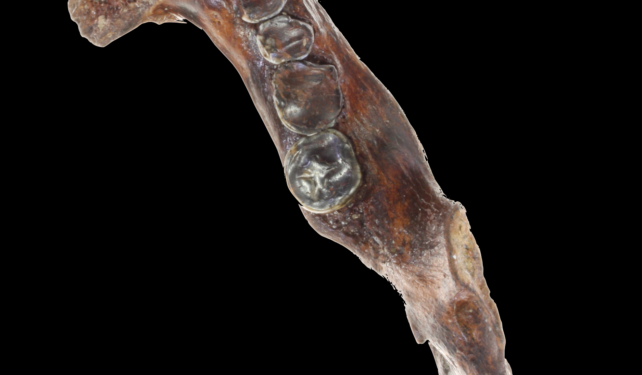The analysis of a perfect jaw found in Taiwan gave us new clues to the Denisovans, an enigmatic people with whom our ancestors had relations.
Once upon a time, Homo sapiens was not the only human species that walks on the planet. We have shared this world with several parents lost for a long time, a story of a mixture written in our genomes.
The most famous and most famous of them are the Neanderthals. But, further east, another smaller parent made their house. These are the Denisovans, which we know very little, due to the shortage of their remains.
Named Penghu 1 by archaeologists, the jaw is the most intact Denisovan fossil of less than 15 identified to date, and the first discovered in Taiwan.
Denisovan remains were found in Siberia, in the Denisova cave for which they are appointed; In China, in the cave of Baishiya on the Tibetan plateau; And a possible Denisovan tooth in a Laos cave, although this can be Neanderthal.
Most of these remains are either bone or teeth fragments. A complete skeleton of Denisovan has never been identified. Although genetic analysis suggests that they diverge Neanderthals a few hundred years ago, the precise moment of their migration through Asia or their possible disappearance is not clear.
The dating of sediment layers in the Denisova cave suggests that Denisovans occupied space between 300,000 and 50,000 years. This is the best information we have so far.
We also know, on the basis of Denisovan’s DNA remains in modern humans that they were probably much more widespread than their remains suggested.
Although it was taken from the ocean about 25 kilometers (15 miles) off the west coast of Taiwan more than a decade ago, the history of Penghu 1 was as troubled as the sediments in which it has been for thousands of years.
Beyond belonging to a member of the hominid family, a more precise identity has remained elusive, with an attempt to recover unsuccessful DNA.
Now, a team of scientists led by the graduate university for advanced studies in Japan and the University of Copenhagen has made another crack there … and fell for the Grand Open mystery.
Their research was based on, and not on DNA, but a series of techniques collectively called the analysis of ancient proteins, or paleoproteomic. This process consists in extracting proteins from the enamel from bones and teeth from ancient remains, by subjecting them to techniques such as mass spectrometry and by using them to build a profile of the individual in question.

After withdrawing probable contaminants and potentially biased factors, the team was left with 22 proteins that provided 2,218 amino acid residues that could be used to put the fossil in context with Denisovans, Neanderthals, ourselves and other large apes. The comparison confirmed that the jaw is indeed of hominid origin … and two variants of sequence of amino acids of the sampled thousands were exclusive to Denisovans.
They also found specific male proteins, revealing that Penghu 1 belonged to a male Denisovan who lived tens of thousands of years-about 4,000 kilometers south-east of the Denisova cave and 2000 kilometers south-east of the Baishiya cave.
We don’t know exactly when Penghu 1 lived; Until now, the attempts to date of the Mandible have returned a wide range of 10,000 and 190,000 years. What the bone tells us is that the Denisovans had larger molars and more robust jaws than the Neanderthals, a difference that probably emerged after the two groups diverged between 300,000 and 400,000 years.
“The identification of Penghu 1 as Mandibule de Denisovan confirms the inference of modern human genomic studies that Denisovans were widely distributed in East Asia”, write researchers in their article.
“It is now clear that two contrasting hominines groups – Neanderthals with small teeth with high but gracile mandibles and large teeth from low but robust mandibles (as a population or as a male character) – coexisted in the middle of the middle of the Pleistocene of Eurasia.”
We may never really have a complete image of who were the Denisovans and the way they lived, but it is a spectacular discovery which brings us closer to this enigmatic piece of the human puzzle.
Research was published in Science.


